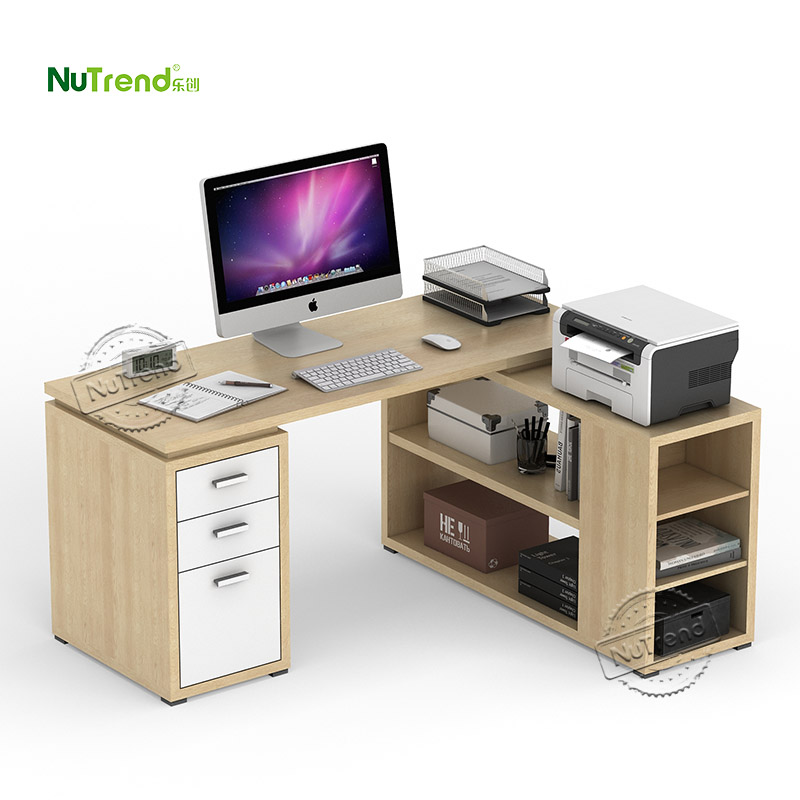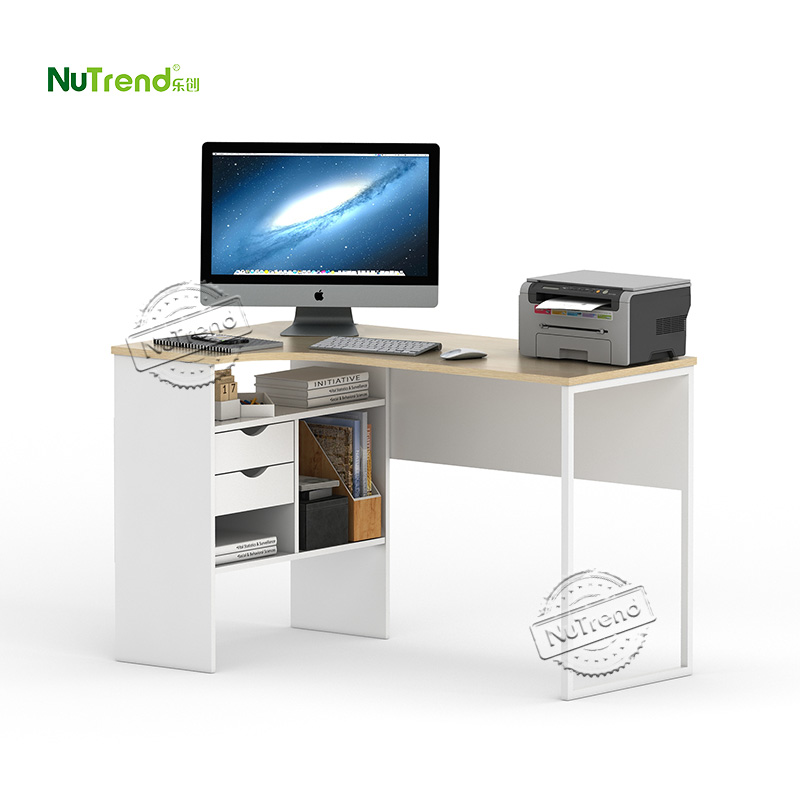What are the basic materials of office furniture? What are the characteristics?
1. Particleboard
Particleboard first appeared in Europe and has a history of more than half a century. It is a composite board made of waste materials (woods, plants and straw) from wood harvesting and processing, and undergoes high temperature and high pressure treatment. The thickness of the particleboard is 12 mm, 16 mm, 18 mm, 25 mm and 33 mm. Because of its simple production process, abundant raw materials and low cost, it is very popular in the market. The pressing method can be divided into flat particle board and extruded particle board.
Advantages:
1. Not easy to deform, smooth surface, stable physical properties;
2. Good quality, easy to cut processing;
3. The production of particleboard does not need to be felled, which can protect precious forest resources.
Disadvantages:
1. Strong heat absorption, poor nail grasping ability (lower than medium density fiberboard), seldom used in filing cabinets and other gravity support cabinets, generally used to produce low-end office furniture products.

2, MDF
Density board, also called fiberboard, is made from waste materials and other grasses from the wood processing process. It is cut, soaked, pulped, heat-pressed, and dried by using urea-formaldehyde resin or other suitable adhesives. Medium density fiberboard can be divided into high density board, medium density board and low density board according to the density. Among the many man-made panels, medium-density fiberboard is popular in the market for its excellent product performance and is widely used in office furniture products.
Advantages:
1. The surface of the density board is flat, the texture is hard, and it is not easy to deform;
2. It is suitable for various mechanical processing, such as drilling, sawing and milling.
Third, the fire board
3.Fireproof board
it is also called high-pressure decorative board. Fireproof board is made of siliceous material or calcium material as raw material, with a certain proportion of fiber material, light aggregate, adhesive and chemical reagent, and made by autoclaving technology. The thickness of fireproof board is generally 0.8 mm, 1.0 mm and 1.2 mm. It is a new material that is currently used more and more. The term "fireproof" only means its one-way performance and can also be used for decorative surface materials.
Advantages:
1. Abrasion resistance, impact resistance, flame and smoke resistance, heat resistance, acid and alkali resistance, fire resistance, mildew resistance, antistatic, and all destructive behaviors that may occur indoors. The fireproof board has strong resistance.
Disadvantages: 1. High cost and high price. Iv. Splint
Plywood, also known as plywood and thin core board, is composed of three or more 1 mm thick veneers or thin boards, which are steamed, boiled and softened, and then spun into thin wood chips along the direction of the annual rings. After the glue is added, the plywood is formed by vertical and horizontal cross gluing and hot pressing, and the fiber directions between the boards are perpendicular to each other. The thickness of the plywood is generally 3 mm, 5 mm, 9 mm, 12 mm, 15 mm and 18 mm.
Advantages:
1. The surface is natural and beautiful, with good strength and toughness;
2. The actual texture and effect of the material surface are good;
3. It has a strong nail grasping ability.

Disadvantages:
1. Poor flexibility and can't bear too much pressure;
2. The surface is difficult to handle, and the surface technology requires high;
3. It cannot be used as the overall material of office furniture, but it is generally used for the decoration of office furniture.
5, melamine board
The full name is melamine impregnated paper veneer wood-based panel, which is a decorative board made by soaking paper of different colors or textures in melamine resin glue, drying it to a certain degree, and laying it on the surface of particleboard and density board and hot pressing. Melamine face paper is usually more than 0.1 mm thick, and has a variety of surfaces-such as hemp, suede, gloss and various colors to choose from. The classic light gray, beech, and beige colors are widely used in office furniture.
Advantages:
1. It is stable and will not be free after curing.
Disadvantages:
1. The edge banding requirements are relatively high, and the edge banding quality is poor, so the formaldehyde in the board will be released into the air, which will also pollute the melamine material of the furniture
If you understand the basic boards of office furniture and want to choose some office furniture, such as white home office desks, L-shaped desks, modern office desk ,etc., please contact us